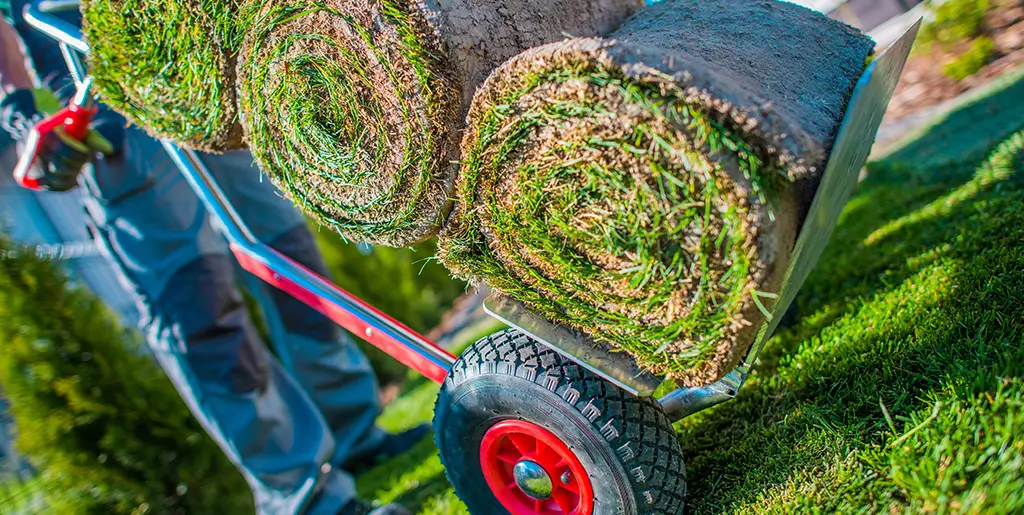
Natural turf, widely used for lawns, sports fields, and landscapes, is often surrounded by misconceptions. Understanding the facts about natural turf can help you make informed decisions and enjoy the benefits of a lush, green lawn. In this blog, we will debunk some of the most common myths about turf.
Myth 1: Natural Turf is Always High Maintenance
A common belief is that natural turf requires extensive maintenance. While some varieties of natural grass do demand more care, advancements in turf technology have led to the development of low-maintenance options.
Traditional natural turf does need regular mowing, watering, fertilizing, and pest control. However, modern grass varieties are designed to be more resilient and require less attention. For instance, drought-tolerant grasses can thrive with minimal watering, and pest-resistant varieties reduce the need for chemical treatments.
Additionally, implementing smart lawn care practices can further reduce maintenance. Using mulch mowing, where grass clippings are left on the lawn to decompose, provides natural fertilization. Efficient irrigation systems, like drip or soaker hoses, target the root zone and conserve water, making natural turf easier to manage.
Myth 2: Natural Turf is Bad for the Environment
Another prevalent myth is that natural turf is harmful to the environment due to the resources required to maintain it. While it’s true that traditional lawn care can involve significant water usage and harmful chemical treatments, sustainable practices can mitigate these impacts.
Modern lawn care emphasizes environmentally friendly approaches. For instance, organic fertilizers and integrated pest management (IPM) reduce chemical reliance. By choosing drought-resistant grass varieties, you can significantly cut down on water usage. Additionally, practices like rainwater harvesting and greywater recycling can provide sustainable irrigation solutions.
Furthermore, natural turf products offer eco-friendly benefits that synthetic alternatives do not. It contributes to cooling the environment, reducing the urban heat island effect, and providing habitats for various species. Natural turf also plays a role in carbon sequestration, absorbing CO2 from the atmosphere and storing it in the soil.

Myth 3: Natural Turf Causes More Injuries in Sports
There is a belief that playing on natural turf leads to more injuries compared to synthetic alternatives. This myth has persisted despite evidence suggesting otherwise.
Research on injury rates for athletes playing on natural turf versus synthetic surfaces has shown that well-maintained natural turf can be just as safe, if not safer, than synthetic options. Natural turf provides a softer landing surface, reducing the risk of impact injuries. It also offers better traction, which can prevent slips and falls.
Sports organizations and athletes often prefer natural turf due to its ability to regenerate and repair itself, offering consistent playing conditions. Proper maintenance, such as aerating the soil and ensuring adequate moisture levels, can enhance the safety and performance of natural turf fields.
Myth 4: Natural Turf Doesn’t Look Good Year-Round
A common misconception is that natural turf doesn’t maintain its appearance throughout the year. While it’s true that natural grass lawns can be affected by seasonal changes, proper care can keep them looking good year-round.
Choosing the right grass variety for your climate is crucial. Cool-season grasses, like Kentucky bluegrass and fescue, thrive in cooler temperatures, while warm-season grasses, such as Bermuda and zoysia, are better suited for hot climates. Overseeding with a mix of cool and warm-season grasses can help maintain a green lawn throughout the year.
Regular lawn care practices, including fertilizing, watering, and mowing, play a significant role in maintaining the appearance of natural turf. Soil health is also vital; adding organic matter and ensuring proper pH levels can support robust grass growth.
Myth 5: Natural Turf is Expensive
Many people believe that maintaining a natural turf grass is too expensive. However, when managed correctly, natural turf can be a cost-effective solution.
The upfront costs of installing natural turf can be lower than those of synthetic grass alternatives. Smart practices can manage long-term maintenance costs, such as water, fertilizer, and pest control. Efficient irrigation systems, organic lawn care, and choosing the right grass variety can reduce overall expenses.
Comparing the long-term costs of natural turf to synthetic options reveals that natural turf can be more economical. The self-repairing nature of natural grass means fewer expenses for repairs and replacements. Additionally, the environmental benefits, such as improved air quality and biodiversity, offer added value that synthetic turf cannot match.
Find Your Turf Solution
In summary, many myths about turf are based on outdated information or misconceptions. Modern natural turf solutions offer a range of benefits and can be tailored to suit different needs and preferences.
By debunking these common myths, we hope to provide you with the information needed to make an informed decision about your turf options. Natural turf can meet your needs, whether you are looking to reduce maintenance, minimize environmental impact, enhance safety, or achieve a natural look and feel.For personalized advice and to explore the best natural turf options for your specific situation, consider consulting with turf professionals. We can provide expert guidance and help you find the perfect turf solution to achieve your desired results.